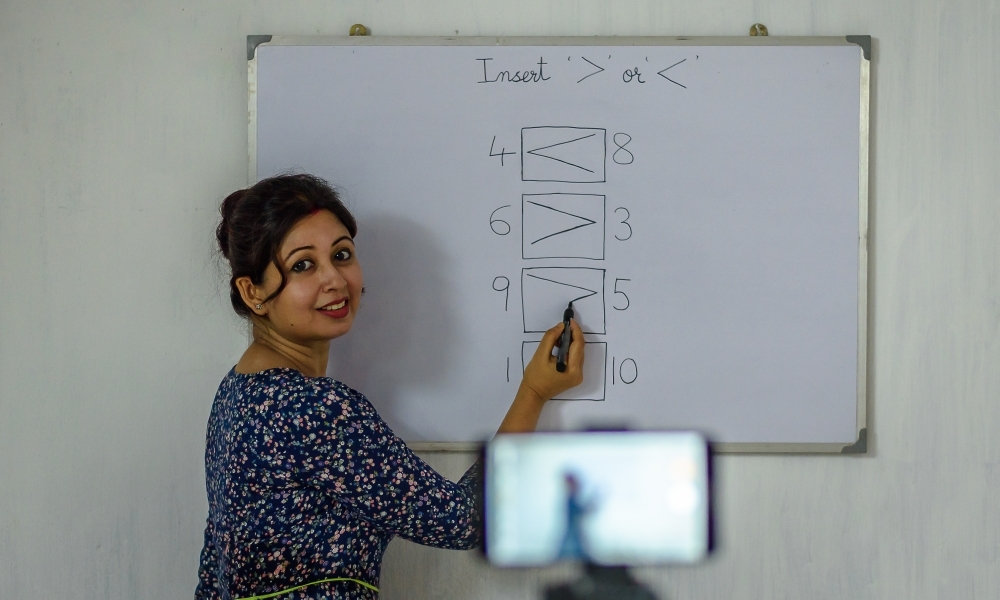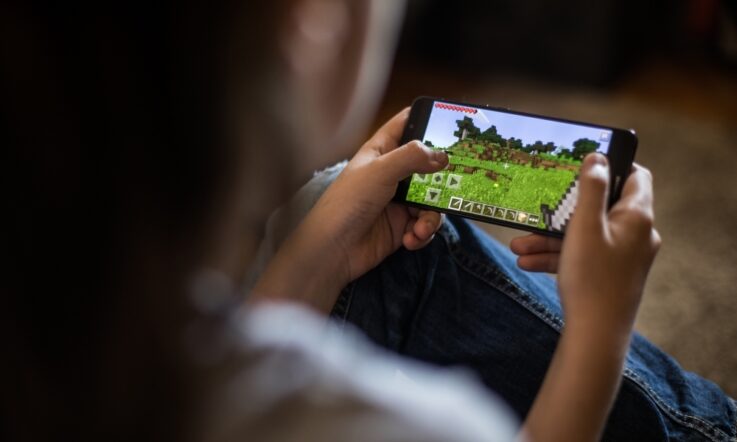For teachers affected by remote delivery of teaching, many found the value and utility of engaging their students through Instructional Video (Choi, 2021; Moorhouse & Wong, 2022). Indeed, for some teachers, the shift from delivering live lessons via videoconferencing gave way to pre-recording video content for their students to access when convenient to them.
Within the literature, the question of creating, or curating instructional videos for students is an ongoing and unresolved dilemma (Fleagle et al., 2018; Maher et al., 2015). Regardless of where the videos are drawn from – be it YouTube, a schools Learning Management System, or a teachers’ own collection of recorded instruction – a return to the classroom provides many more possibilities for their classroom application. For those interested, I’ve elsewhere provided a detailed taxonomy of all possible forms of Instructional Video that may be of interest to teachers seeking to diversify their output for students, and make them more accessible and effective.
What does the research suggest?
For many, the most commonly understood way to work with video is through Flipped Learning (Sams & Bergmann, 2013; Bergmann & Sams, 2014a; 2014b; Bergmann, 2017). The research literature shows that the popularity and awareness of this method far outstrips its academic proven success, as researched. For example, Carrie Bredow and colleagues (2021, pp.17) note that their ‘findings suggest that flipped learning produces small to moderate academic gains relative to lecture-based learning’ within higher education settings. Where within a secondary classroom setting, the meta-analysis of Li Cheng and colleagues (2019) notes that, whilst ‘it appears the flipped classroom instructional approach does have a positive effect on cognitive student educational outcomes, the effect size is trivial to small under a random-effects model’ (pp.21). The ultimate discovery of this study being that the only consistent element of the Flipped Learning approach within the literature was the use of videos, though some made use of a textbook instead. Once these common elements were excluded, the approach adopted with the time remaining was extremely diverse, and therefore difficult to synthesise.
Looking beyond the specific pedagogy of Flipped Learning, the Multimedia learning theory of Mayer (2002; 2005) shows that video outputs prove superior to other single mode learning materials – such as worksheets and PowerPoint presentations – in laboratory conditions. As the common currency within schools is largely PowerPoints, worksheets, textbooks and novels (rather than podcasts, videos, and screencasts), this serves as something of a challenge to common teaching approaches.
For this reason, a focus upon the use and utility of Instructional Video itself, as a means to diversity the means of instruction and delivering information to students, is a way to simplify this approach and focus on what we know does work.
Six methods for applying Instructional Video with students
Here are the six common approaches to apply Instructional Video within a classroom or educational setting.
- Direct classroom instruction, lecture-style, recorded. The most common example of Instructional Video application within educational settings is the direct instruction that takes place as normal, but is filmed for later access. This is not an insignificant improvement upon direct instruction because it allows the content to be accessed after the fact, in a ‘video-on-demand’ style. Perhaps the most widely known use of this approach is within universities; or the Australian teacher Eddie Woo, who records the direct instruction elements of his mathematics lessons.
- Shared viewing of instructional content: a class group watching a video together. The classroom space can often be shifted into a cinema for educational purposes, with teacher and student alike engaging in Instructional Video content in an additive way. The feature that typifies this approach is the presence of interruptions and the control of video output by the teacher. Pausing to allow discussion and engaging with one another in a social manner adds another dimension to this approach’s application.
- A partial flip: some content completed in class, some viewed at home. This method lends itself towards a beginning of the Flipped Learning approach to teaching. It resembles some elements of the classroom instruction taking place via video and other elements completed within the learning space. The selection of what content is most suitable to be viewed at home, or in class, becomes the primary concern of the teacher. Broadly speaking, content that needs to be learnt ‘by rote’ can easily be completed outside of class.
- In-class station rotation: students move through multiple stations with screens covering different topics in a sequential or non-sequential manner. This method requires multiple video artefacts for teachers to arrange in a pedagogically logical manner around the learning space, with students required to rotate through them in a manner chosen by the teacher.
- Blended, Flexible model: a mixture of the above models, typically shaped by the content and the student cohort. This approach is a combination of all of the above approaches and traditional teaching.. It is responsive to student needs and adapts the measures of each of those outlined above (and others not mentioned) in ways dictated by the teacher.
- Full flip: all content is covered at home, via video or text, and the learning within class becomes active and student-centric. The full flip model is most commonly achieved by universities and requires that all content be completed in preparation to attending a tutorial-style use of classroom time. This means that all lectures are completed via a pre-recorded video.
It is important to note that teachers will need to move through these approaches in an additive manner – a full flip may not be impossible within your full-time working week. However, a consideration of each of these models outlines ways that teachers can aim to develop their approaches in regard to Instructional Video.
The affordances of an Instructional Video or Flipped Learning approach to shift teacher’s pedagogical approaches must be noted (Bormann, 2014). Whilst student outcomes may not dramatically improve as a result of each of these approaches, I can personally vouch for the value of these ideas to dramatically shift pedagogy and alter workload and workflow for teachers who apply them.
References
Bergmann, J., & Sams, A. (2014a). Flipped learning: Gateway to student engagement. International Society for Technology in Education (ISTE).
Bergmann, J., & Sams, A. (2014b). Flipped learning for science instruction (Vol. 1). International Society for Technology in Education.
Bergmann, J. (2017). Solving the homework problem by flipping the learning. ASCD.
Bormann, J. (2014). Affordances of flipped learning and its effects on student engagement and achievement. Graduate Research Papers. 137. https://scholarworks.uni.edu/grp/137
Bredow, C.A., Roehling, P.V., Knorp, A.J., & Sweet, A.M. (2021). To flip or not to flip? A meta-analysis of the efficacy of flipped learning in higher education. Review of Educational Research, 91(6), 878-918. https://doi.org/10.3102/00346543211019122
Cheng, L., Ritzhaupt, A.D., & Antonenko, P. (2019). Effects of the flipped classroom instructional strategy on students’ learning outcomes: A meta-analysis. Educational Technology Research and Development, 67(4), 793-824. https://doi.org/10.1007/s11423-018-9633-7
Choi, C. (2021, March). Assessment of Course Materials Developed for Remote Instruction. In Proceedings of ASEE Southeastern Section Conference [virtual].
Fleagle, T.R., Borcherding, N.C., Harris, J., & Hoffmann, D.S. (2018). Application of flipped classroom pedagogy to the human gross anatomy laboratory: Student preferences and learning outcomes. Anatomical Sciences Education, 11(4), 385-396. https://doi.org/10.1002/ase.1755
Mayer, R.E. (2002). Multimedia learning. In Psychology of Learning and Motivation (Vol. 41, pp. 85-139). Academic Press. https://doi.org/10.1016/S0079-7421(02)80005-6
Mayer, R.E. (2005). Cognitive theory of multimedia learning. The Cambridge Handbook of Multimedia Learning, 41, 31-48.
Maher, M. L., Latulipe, C., Lipford, H., & Rorrer, A. (2015, February). Flipped classroom strategies for CS education. In Proceedings of the 46th ACM Technical Symposium on Computer Science Education (pp. 218-223). https://doi.org/10.1145/2676723.2677252
Moorhouse, B. L., & Wong, K.M. (2022). Blending asynchronous and synchronous digital technologies and instructional approaches to facilitate remote learning. Journal of Computers in Education, 9(1), 51-70. https://doi.org/10.1007/s40692-021-00195-8
Sams, A. & Bergmann, J., (2013). Flip your students' learning. Educational Leadership, 70(6), 16-20.
How did remote learning change your approach to use of instructional video content? Have there been benefits for students? What about your own workflow and workload?



